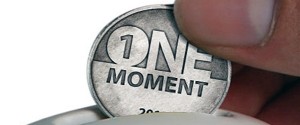
Inventory is recognized in as a waste in the lean system. This is because inventory does not add any value to the customer, but has significant costs associated. Many companies use inventory as a crutch to minimize the impact of inefficiencies in their processes. The inventory appears essential and valuable, but once lean is embraced, the inventory becomes unnecessary.
Some versions of the 7 Wastes refer to this waste as “excess Inventory” instead of “Inventory”. The rationale for this is that manufacturing cannot operate with zero inventories. This form of the 7 Wastes tries to introduce pragmatism into lean. It is true that zero inventory may be impossible to achieve. To achieve zero inventory, you would need to process incoming raw materials as soon as they arrive, process them in one operation (or a linked series of operations), and ship the finished goods immediately.
Although it may be impossible to achieve zero inventory, it is important to strive towards this goal. Introducing an acceptance of a waste into the lean methodology compromises the lean philosophy. Practitioners should continually strive to reduce inventory no matter how low the level. There will be times when further inventory reduction is not possible or cost effective with existing processes, but that should not lead to a permanent acceptance of inventory as necessary.
Causes of Inventory
Overproduction, another of the 7 Wastes, is a primary cause of inventory. Processes and incentives that encourage producing too much product will lead to higher inventory levels.
Inventory is viewed by many as insurance. It protects against unexpected events such as a material shortage, machine breakdown or natural disaster.
Poorly controlled processes lead to large lot sizes, inaccurate forecasts, poor communication with suppliers and customers, and errant management decisions. All of these limitations will result in higher inventory levels.
Effects of Inventory
The most obvious effect of inventory is the capital required to carry the inventory. The cost of inventory is significant, and that cost generates no return. It just sits on a shelf. By reducing the inventory required to operate, the business can reduce the capital it requires in order to support those operations.
Inventory affects a wide range of other expenses. As inventory levels go up, the capital investment in warehouse space also increases. Large warehouses mean more time is required to move product into storage and out of storage locations.
Higher inventory levels also drive up obsolete and excess inventory expenses.
Damage to inventory also increases as more inventory is stored for longer times.
The larger the inventory, the more labor is required to maintain inventory accuracy. A plant that has one day’s inventory on hand will have an fast and easy physical inventory compared to a plant with a year of product in storage. The number of cycle counters and inventory adjusters also increases with inventory levels.
Solutions for Inventory
It is essential to streamline processes and reduce lead times. Every reduction in lead times allows a reduction in the inventory held.
Eliminating WIP (work in process) can be achieved by creating a seamless flow through the production process. Every break in a process requires WIP to be stored and moved between processes. Eliminating these breaks allows the elimination of WIP.
Better forecasting and a shift to a pull based scheduling system will eliminate the large forecast variances that lead to overproduction and increases in inventory levels.
Any effort seeking to reduce inventory must have incentives to motivate employees to minimize inventory. Managers need to treat the capital tied up in inventory as a negative to be minimized. This can involve charging a plant for the cost of capital or by making inventory levels part of the bonus calculation.
The most important thing to remember when looking at inventory is that all inventory is waste. Too often, inventory’s ability to cover up for other problems makes people think inventory is essential. In reality, correcting the underlying problems will make the inventory unnecessary.




